
















The curtain opens to reveal the author of A Christmas Carol, Charles Dickens, along with two assistants on stage. The assistants merrily greet the audience before introducing Dickens. The lights fade as Dickens reads an excerpt from his novel, “Marley was dead, to begin with...”

Outside of Ebenezer Scrooge’s counting house on Christmas Eve, Scrooge silences a group of young carolers. After he enters his business, Scrooge works in his cold, dim office with his clerk, Bob Cratchit. The two assistants introduce Scrooge with every unflattering word in the dictionary. Scrooge proves his conniving and cheerless nature by rejecting his nephew Fred’s invitation to Christmas dinner and then turning away two visiting philanthropists asking for donations. Scrooge resentfully grants Bob Cratchit Christmas Day off from work and heads home.
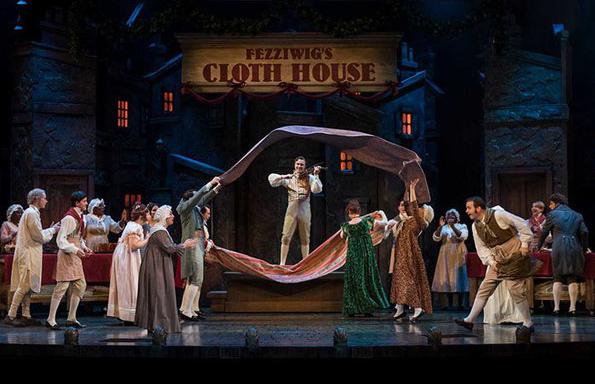
Scrooge arrives home, and the knocker on his front door transforms into the face of his deceased business partner, Jacob Marley. Startled, Scrooge does not trust what he sees. Marley’s ghost then appears to Scrooge in his bedroom. Draped in the shackles and chains of greed, Marley warns Scrooge that three spirits will visit him before the night is over, and Scrooge must listen to them if he hopes to escape the fate that Marley endures.

As the clock strikes midnight, the Ghost of Christmas Past appears before Scrooge and the two journey to holidays of Scrooge’s younger years. First, they travel to Scrooge’s childhood boarding school, where he sees his 10-year-old self alone inside a classroom reading Robinson Crusoe. His friend Thomas asks him to spend Christmas with his family, but young Scrooge turns down the offer. We then meet 15-year-old Scrooge, too depressed to read the aforementioned novel. A surprise visit from his beloved sister Fan cheers him, as she has come to fetch him home for Christmas.
Next, they visit Scrooge as a young man at a raucous company Christmas party with his old employer, Mr. Fezziwig. Scrooge witnesses his proposal to his sweetheart Belle, even though he had no financial security to offer her. Before returning home, the Ghost of Christmas Past shows Scrooge a changed man who let Belle slip away in service of his own greed.
The Ghost then shows Scrooge Belle with her happy family and husband twelve years later. Scrooge is heartbroken, and the Ghost of Christmas Past finally returns him to his bedroom chamber.
Back in bed, Scrooge awakens to the Ghost of Christmas Present. The ghost whisks Scrooge to the Cratchits’ household as the family gathers for their humble Christmas dinner. The ghost tells Scrooge that Tiny Tim, Bob Cratchit’s sick son, will die if nothing changes. The news troubles Scrooge, and he demands to know what can be done to spare Tiny Tim. The ghost does not answer. Bob Cratchit then proposes a toast to Mr. Scrooge against his wife’s protestations, and Scrooge’s heart is warmed by the gesture. The Ghost of Christmas Present then takes Scrooge to his nephew’s house where friends and family play games and poke fun at the cantankerous Scrooge. With their time together fading, the Ghost of Christmas Present reminds Scrooge of society’s troubles, showing him two figures: Want and Ignorance.

The Ghost of Christmas Future appears and takes Scrooge to visit three businessmen discussing an old man’s death. Scrooge watches and questions the ghost about what he sees, but the ghost does not respond. Instead, he shows people, including Scrooge’s housekeeper, pawning off the property of the deceased man. Scrooge realizes he is the one who has died. In agony, Scrooge begs to see an example of someone saddened by his death. The Ghost shows Scrooge a family overjoyed that they will have more time to find the solution to their debts owed to the counting house. Finally, the Ghost of Christmas Future shows Scrooge the death of Tiny Tim. Scrooge feels helpless, and begs for a second chance. Without a word, the ghost leaves.

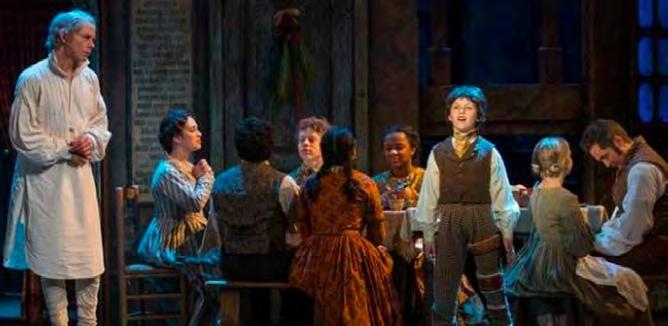
Scrooge awakens invigorated with a newfound Christmas spirit. Surprising everyone with Christmas cheer, Scrooge tries to hug his housekeeper, purchases a prize turkey for the Cratchit family, donates a substantial sum to charity, and tells Fred and Ellen he would like to join them for Christmas dinner. The next morning at work, Scrooge gives Bob Cratchit a raise and promises to help the Cratchit family. Scrooge regains his humanity and pledges to keep his giving spirit throughout the rest of his life.

The author and narrator of the tale.



A miserly and wealthy man who has no concern for anyone but himself at this stage in his life. He is miserable and sees considerable change in his outlook during the course of his experiences with the Christmas ghosts.





Scrooge’s put-upon employee. Bob is kind-hearted, a good father, and takes all of Mr. Scrooge’s abuse in stride.
An ethereal spirit who shows Scrooge the person he was and the life he led in years past.
A jolly and joyous spirit who shows Scrooge the celebrations and realities of Christmas this year.

A terrifying and silent spirit who reveals to Scrooge the terrible outcomes if he does not change his ways.


Scrooge’s sister and best friend as a child, lovely and kind. Mother to Fred, she passed away as a young woman.


Scrooge’s fiance in his younger years who he lost due to his own greed and selfishness.
Owner of the business where Scrooge worked as a young man; joyous, kind, and wise.
Owner of the business where Scrooge worked as a young man; joyous, kind, and wise.


Bob’s wife and mother to the large Cratchit family, she is fed up with Mr. Scrooge’s mistreatment of her husband, but is a kindhearted and hard working person.
The youngest Cratchit child who has a physical disability and a huge heart.

Scrooge’s cheerful and kind nephew who longs for a connection to his uncle.
Charles Dickens was born on February 7, 1812 in Portsmouth, England to John and Elizabeth Dickens. Dickens’ father worked as a clerk at the Navy Pay Office, but landed himself in debtors’ prison when Dickens was only twelve. This left young Dickens to provide for his family, working in Warren’s Blacking Factory. The experiences in the factory haunted him for the rest of his life and influenced his later written work.
In 1829, Dickens became a reporter at Doctors’ Common Court in Parliament. By 1832, he was a successful debate reporter in the House of Commons. He then became a newspaper reporter. The following year, his first short story appeared and was followed soon thereafter by several other stories and sketches.
Dickens met Catherine Hogarth in 1835 and married her in 1836. He published the first series of Sketches by Boz in the same year. In November 1837, Dickens published the first of his serialized works, The Pickwick Papers. The Pickwick Papers’ monthly publications were greatly successful, and Dickens embarked on his career as a full-time novelist.

Dickens began quickly producing written work with Oliver Twist, Nicholas Nickleby, and several other books being published in just a few years. In 1842, he visited Canada and the United States; there he advocated for international copyright laws and the abolition of slavery. While Dickens found many things about the United States unfavorable, he toured the U.S. again with his works towards the end of his life.
In 1843, Dickens published A Christmas Carol as part of a Christmas book series. It was an instant classic and sold 6,000 copies in less than a week. Between travels, writing, and the births of his ten children, Dickens had much to occupy his time, but in 1858, he began touring public readings of his works. In the same year, he separated from his wife to live with Ellen Ternan, an actress working in his theatrical company.
In the last decade of his life, Dickens embarked on several reading tours and continued to write. Despite health complications, he continued to travel until he collapsed from a stroke in 1869. Dickens’ final readings took place in London in 1870. Dickens died June 9, 1870 after suffering another stroke. His final novel, The Mystery of Edwin Drood, remains unfinished.
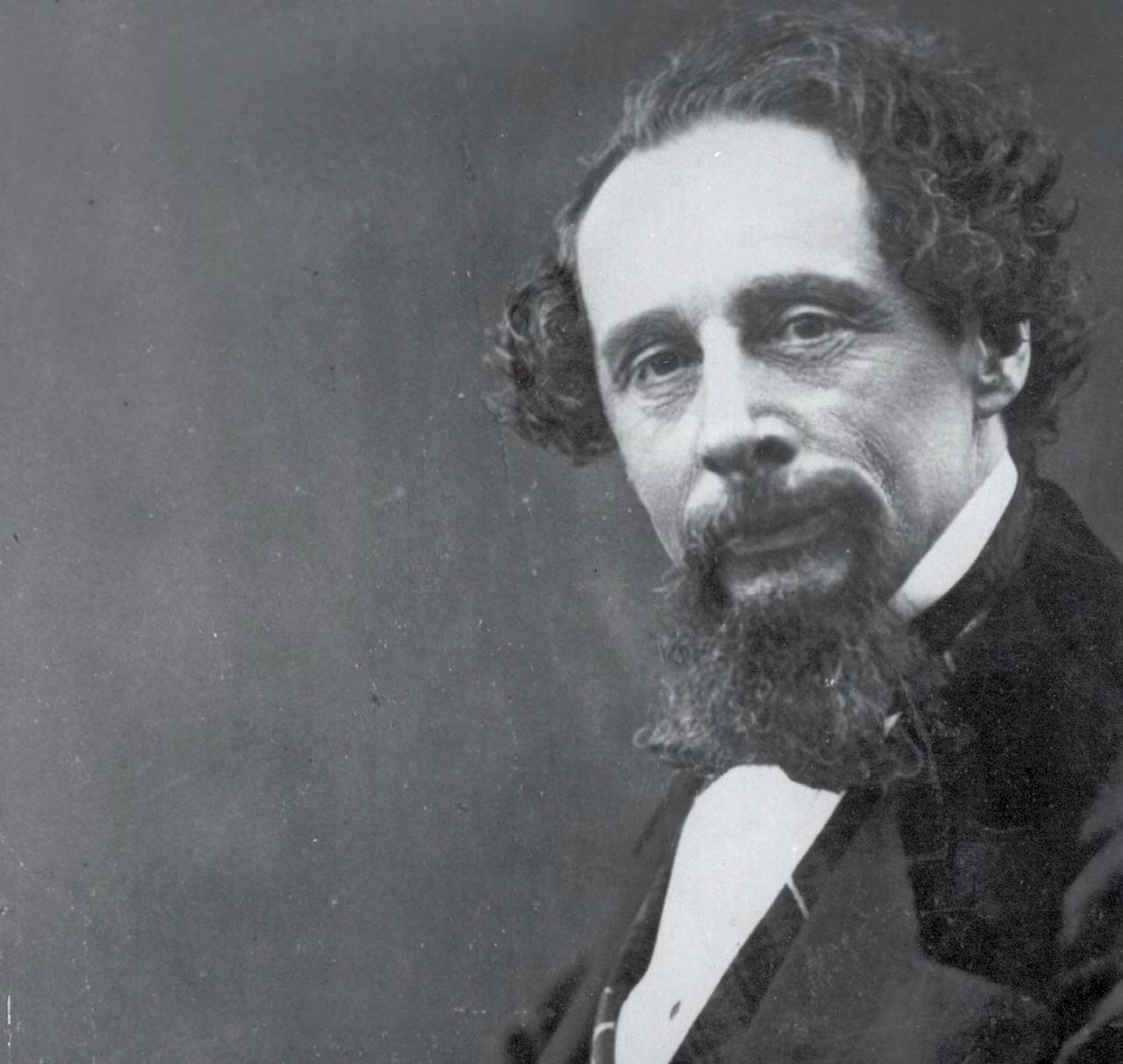
A Christmas Carol met great success upon its publication in 1843, and its enduring legacy has extended long past Dickens’ lifetime. A Christmas Carol has shaped our views of the Christmas holiday by giving us memorable characters and profound, heartfelt stories that radiate the meaning of the holiday season. Less than a year after its release as a novella, multiple theater producers turned the story into a play, and in 1853 Dickens toured public readings of the piece.
Continuing as a Christmas classic for almost 180 years, A Christmas Carol has since been adapted into multiple mediums ranging from films to television show episodes, comics, and other literary adaptations. Adaptations
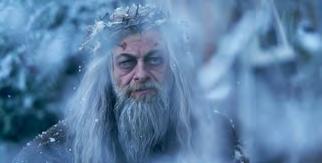


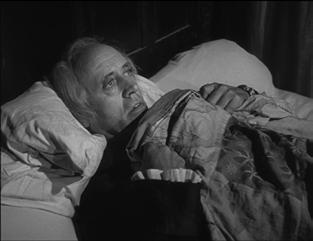
of this classic tale number in the hundreds or perhaps thousands. The themes of goodwill, charity, and the power of the Christmas spirit have made A Christmas Carol an appealing story for many different audiences and interpretations.

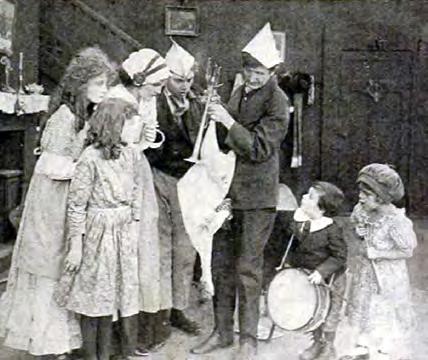

Dozens of television shows have done episodes that are based on the story of A Christmas Carol such as Mr. Belvedere, A Different World, Dr. Who, The Simpsons, The Jetsons, The Odd Couple, Sanford and Son, and many more.
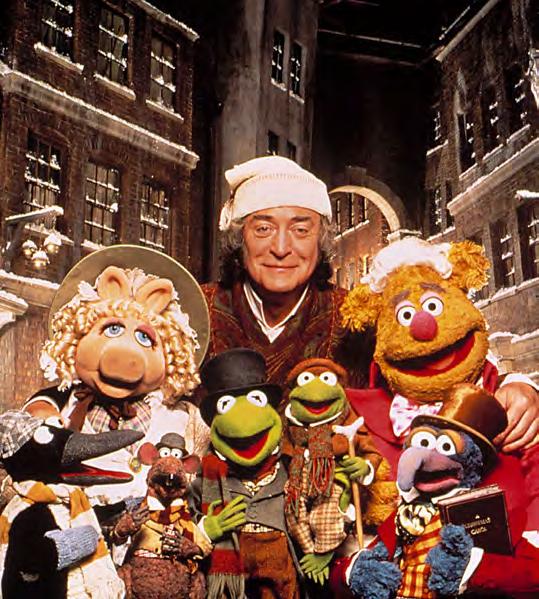
The Gospel According to Scrooge (Historic State Theater)
The Scrooge Diary (touring)
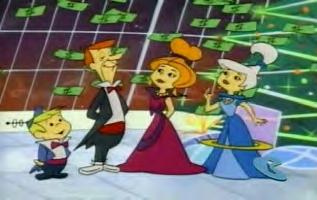
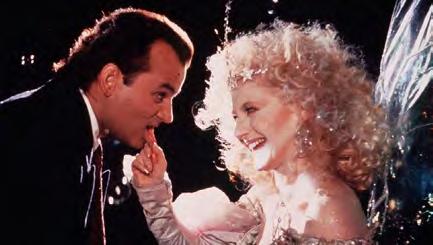
A Christmas Carol (one-man show starring Patrick Stewart)
Scrooge: The Musical (UK)
A Christmas Carol: The Musical (Broadway)
Scrooge in Love! (San Francisco)
An Actor’s Carol (California) The Passion of Scrooge (opera)
Theaters around the world present adaptations of A Christmas Carol on their stages each year. A few interesting adaptations:Bill Murray and Carol Kane in Scrooged, 1988. Photo Credit: Syfy Wire Alastair Sim in A Christmas Carol, 1951. Photo Credit: Flickr. Michael Caine and his famous co-stars, A Muppet Christmas Carol 1992. Photo Credit: Walt Disney Co. The Right to Be Happy, 1916. Photo Credit: IMDb. Andy Serkis in A Christmas Carol, 2019. Photo Credit: Robert Viglasky, FX. A Christmas Carol episode of The Jetsons Photo Credit: Pinterest.


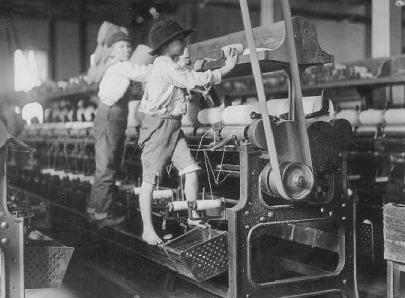

his stories. As a popular and prolific author, Dickens’ pen gave voice to those without much power of their own.
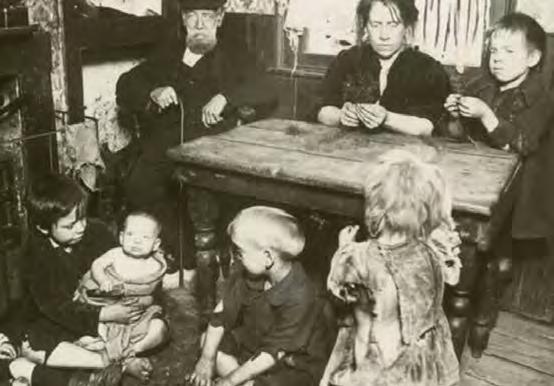


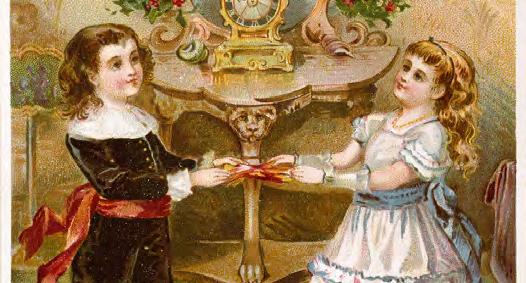
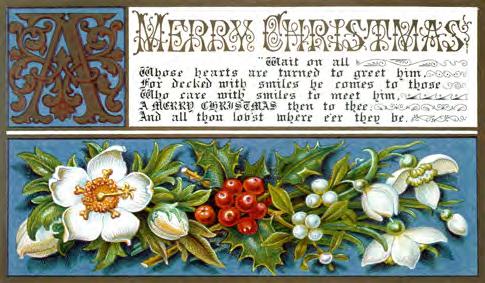
The Victorian era was a time when many of the “classic” Christmas traditions emerged in British and American culture. The emerging wealth and growing middle class from the rise of the Industrial Revolution led to more freedom to celebrate the holidays. Many people were now able to take off work on Christmas and the following Boxing Day, leading to a growth in the importance of Christmas in English culture.
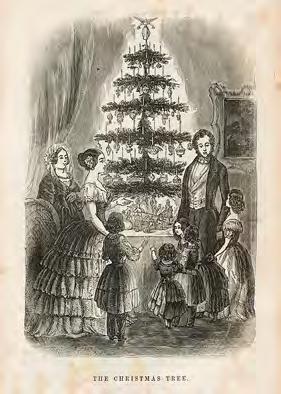
Milwaukee Rep’s adaptation of A Christmas Carol plays on the theatrical style of the English pantomime, a popular amusement for families during the holidays. Some may be familiar with the term pantomime in relation to the theatrical style of acting with physicality instead of words or mimes such as Marcel Marceau. English pantomimes are not, in fact, pantomimed at all!
Known more widely as “panto,” this theatrical tradition can be experienced throughout the UK during the holiday season from November to January. Panto is a musical-comedy style of theatre based on familiar tales and meant to be entertainment for the whole family. It is loud, boisterous, and outright fun for everyone from audience to actors. Panto uses audience participation often, as in our version of A Christmas Carol when Scrooge asks the audience to be on the lookout for ghosts or when Dickens’ assistants ask for adjectives to describe Mr. Scrooge.
The panto has roots in the Italian theatrical form from the 15th and 16th century, Commedia dell’Arte. In panto, the stock characters and conventions include:
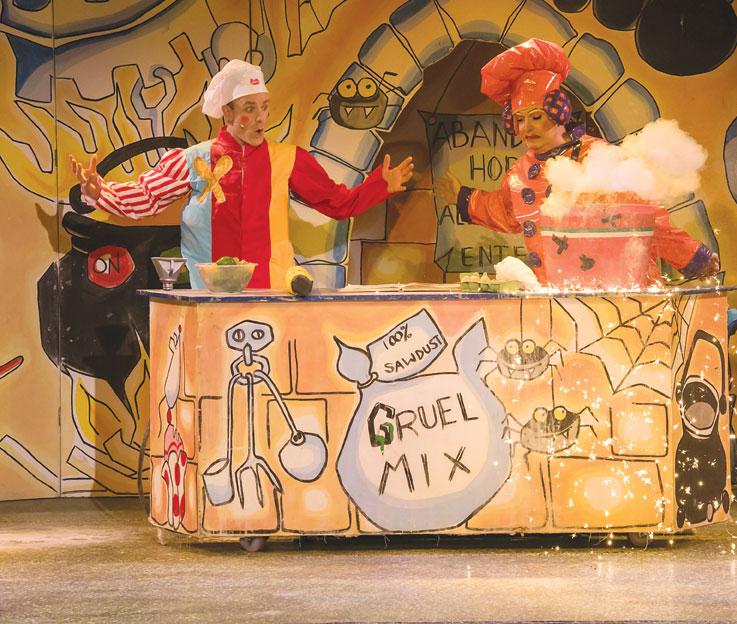
• The principal boy
• The panto dame

• A sidekick or “chorus” who speaks directly to the audience
• A comedy animal portrayed by two actors in one costume
• Lots of audience participation
• Contemporary references and bawdy jokes



• A transformation scene that uses theatrical spectacle
Not all of these elements are present in our production of A Christmas Carol, but many of them are. Keep your eyes and ears peeled for these traditional panto pieces of our production!
Celebrity guest stars have also become a beloved part of pantos over the past 100 years, as they have in our productions of A Christmas Carol. Walk on roles have been played by Mayor Barrett, many local newscasters, radio hosts, and community leaders, not to mention Hank, the Ballpark Pup!
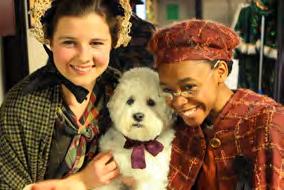

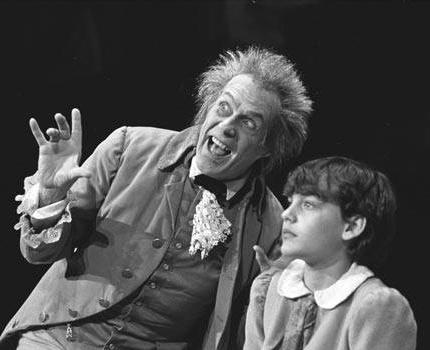
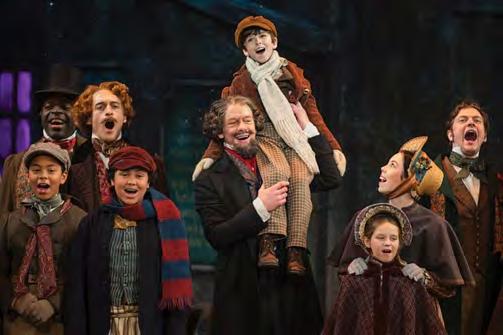
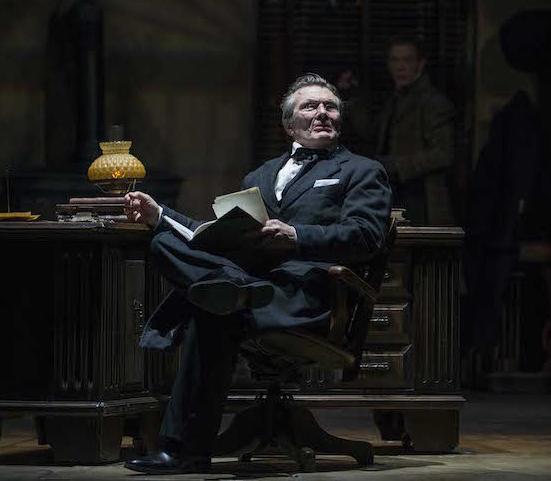
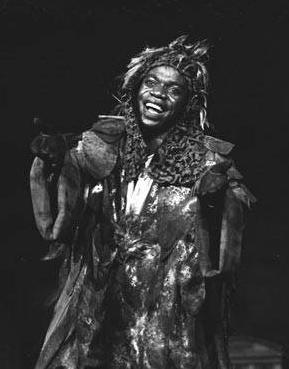
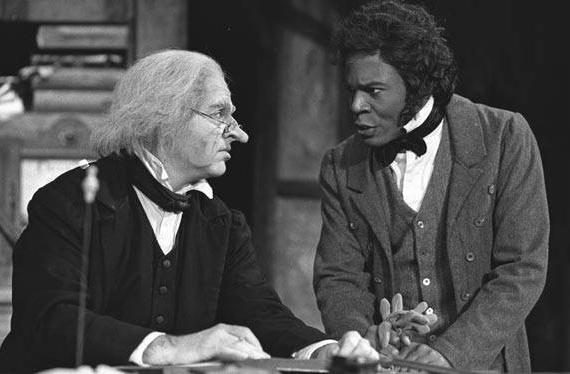
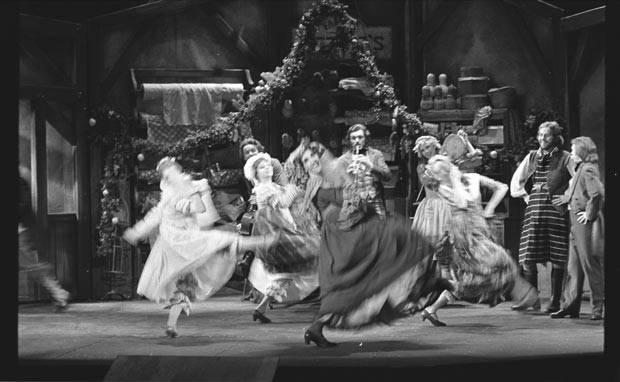

Milwaukee Rep has been delighting audiences in our community with an annual production of A Christmas Carol for more than 45 years. Take a look back at this Milwaukee tradition.James Pickering as Scrooge and Jonathan Adams as Fred, 1991-92 Season. Photo Credit: Mark Avery/University of Wisconsin-Milwaukee Libraries Archives Richard Halverson as Mr. Throttle and George Anagnostopoulos as Boy Scrooge, 1988-89 Season. Photo Credit: Mark Avery/ University of Wisconsin-Milwaukee Libraries Archives. Cast perform closing of the play, 2016-17 Season. Photo Credit: Michael Brosilow. L. Peter Callender as the Ghost of Christmas Present, 1985-86 Season. Photo Credit: Mark Avery/University of Wisconsin-Milwaukee Libraries Archives. Ensemble members dancing at Fezziwig’s party, 1977-78 Season. Photo Credit: Mark Avery/University of Wisconsin-Milwaukee Libraries Archives. Jonathan Smoots as Scrooge and Jonathan Wainwright (in background) as Bob Cratchit, 2015. Photo Credit: Michael Brosilow.
Milwaukee Repertory Theater’s Patty and Jay Baker Theater Complex is located in the Associated Bank River Center downtown at the corner of Wells and Water Streets. The building was formerly the home of the Electric Railway and Light Company.
Milwaukee Repertory Theater’s Patty and Jay Baker Theater Complex is located in the Milwaukee Center downtown at the corner of Wells and Water Streets. The building was formerly the home of the Electric Railway and Light Company.
The Ticket Office is visible on the left upon entering the Wells Street doors.
Financial support enables The Rep to:
✯ Advance the art of theater with productions that inspire individuals and create community dialogue;


Advance the art of theater with productions that inspire individuals and create community dialogue.
✯ Provide a richer theater experience by hosting Rep-in-Depth, TalkBacks, and creating PlayGuides to better inform our audiences about our productions;
Provide a richer theater experience by hosting Rep-in-Depth, TalkBacks and creating PlayGuides to better inform our audiences about our productions.
Maintain our commitment to audiences with special needs through our Access Services that include American Sign Language interpreted productions, captioned theater, infrared listening systems and script synopses to ensure that theater at Milwaukee Rep is accessible to all.
✯ Educate over 21,000 students at 150+ schools in the greater Milwaukee area with Rep Immersion Day experiences, student matinees, workshops, tours and by making connections with their school curriculum through classroom programs such as Reading Residencies;
✯ Maintain our commitment to audiences with special needs through our Access Services that include American Sign Language interpreted productions, captioned theater, infrared listening systems and script synopses to ensure that theater at The Rep is accessible to all;
Educate over 20,000 students at 200+ schools in the greater Milwaukee area with Rep Immersion Day experiences, student matinees, workshops, tours and by making connections with their school curriculum through classroom programs such as Reading Residencies.
Educate the next generation of theater professionals with our EPR Program which gives newly degreed artists a chance to hone their skills at Milwaukee Rep as they begin to pursue their theatrical careers. We value our supporters and partnerships and hope that you will help us to expand the ways Milwaukee Rep has a positive impact on theater and on our Milwaukee community.
✯ Educate the next generation of theater professionals with our EPR Program which gives newly degreed artists a chance to hone their skills at The Rep as they begin to pursue their theatrical careers. We value our supporters and partnerships and hope that you will help us to expand the ways Milwaukee Rep has a positive impact on theater and on our Milwaukee community.
4-290-5376
The Lynde and Harry Bradley Foundation
The Richard & Ethel Herzfeld Foundation
The Richard & Ethel Herzfeld Foundation
The Shubert Foundation